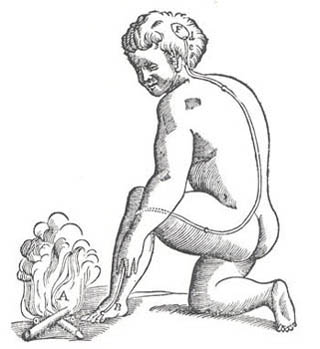
Descartes' concept of the withdrawal reflex. (René Descartes. L'Homme de Rene Descartes. Paris: Charles Angot, 1664. Courtesy of the French National Ministry of Education.)
Instructor(s)
Prof. Chris Moore
Prof. Emilio Bizzi
Prof. Mriganka Sur
Prof. Peter H. Schiller
Prof. Ann M. Graybiel
MIT Course Number
9.05
As Taught In
Spring 2003
Level
Undergraduate
Translated Versions
Course Description
Course Highlights
This undergraduate course is an introduction to the field of motor control and motor learning. The extensive reading list is designed to thoroughly ground the students in the classical beginnings of the field and then lead them to the forefront of research. The related resources allow the students to explore in greater depth specific topics not covered in the class.
Course Description
Surveys general principles and specific examples of motor control in biological systems. Emphasizes the neural mechanisms underlying different aspects of movement and movement planning. Covers sensory reception, reflex arcs, spinal cord organization, pattern generators, muscle function, locomotion, eye movement, and cognitive aspects of motor control. Functions of central motor structures including cerebellum, basal ganglia, and cerebral cortex considered. Cortical plasticity, motor learning and computational approaches to motor control, and motor disorders are discussed.


